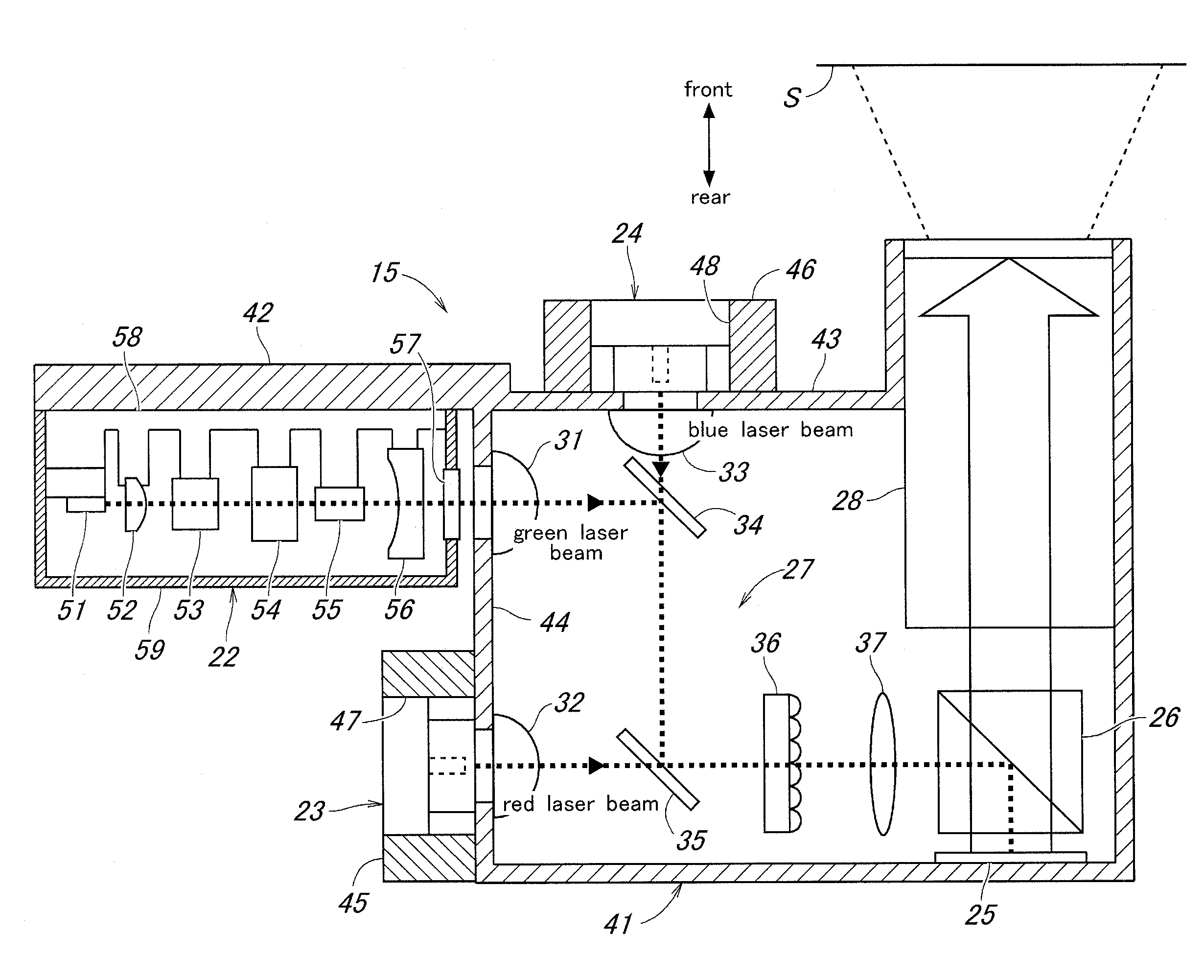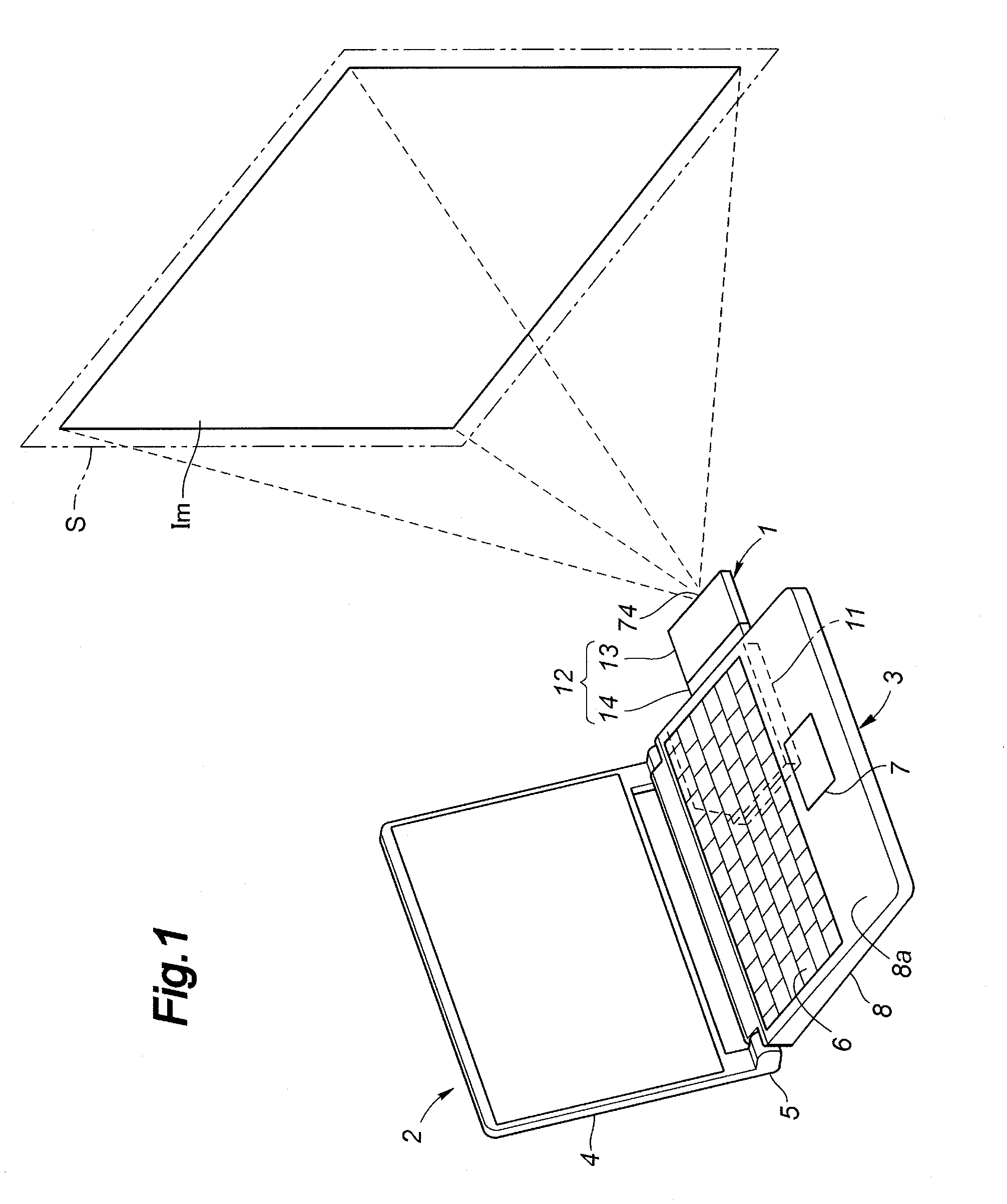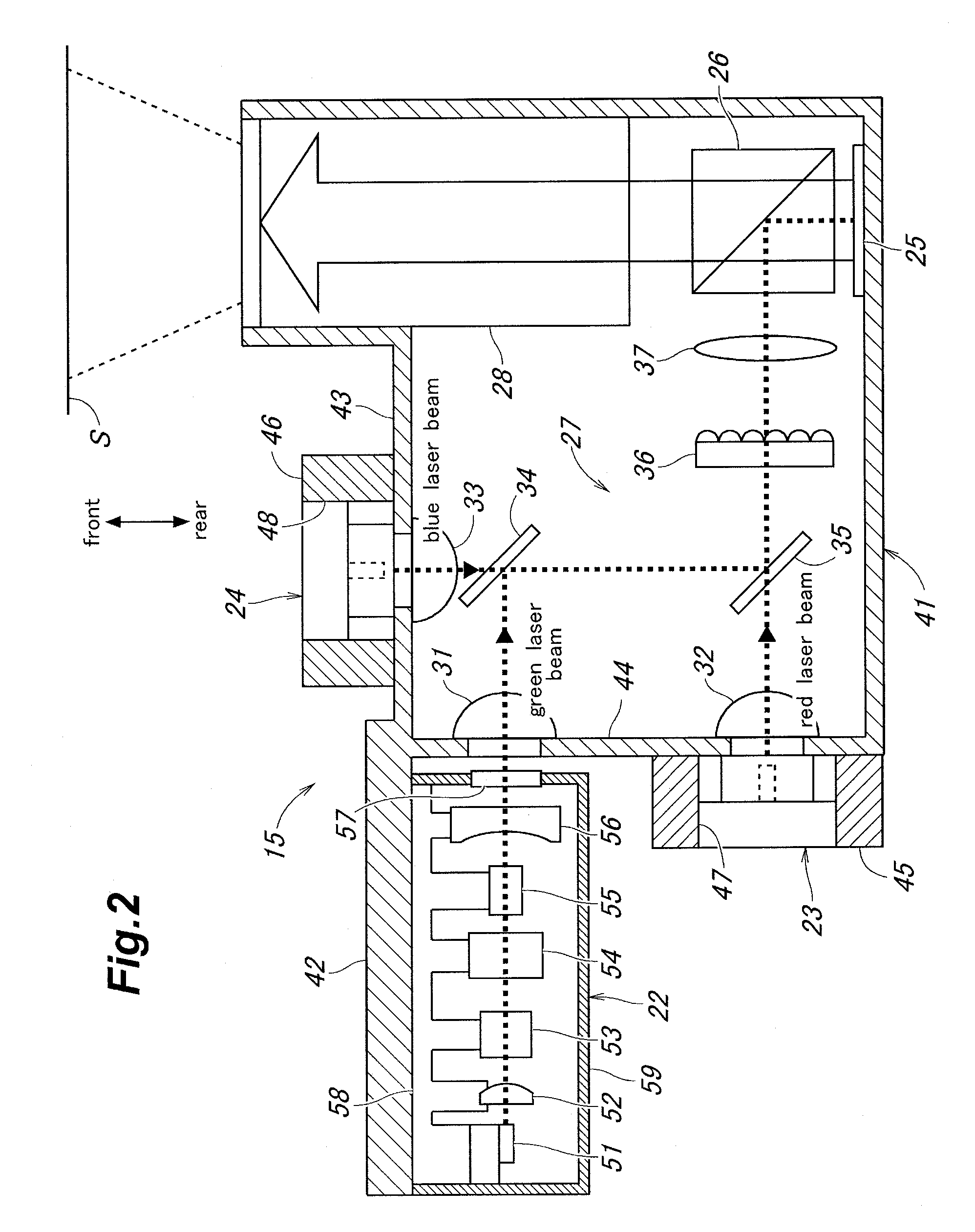Projector lens system and image display system using same
- Summary
- Abstract
- Description
- Claims
- Application Information
AI Technical Summary
Benefits of technology
Problems solved by technology
Method used
Image
Examples
first embodiment
[0072]The specific arrangement of various lens elements in the projector lens system 28 according to the present invention is described in the following with reference to FIG. 4. The various components are shown in section, but are not hatched for the clarity of illustration. The modulated projected light emitted from the polarizing beam splitter 26 on the right hand side of FIG. 4 is projected onto the screen S shown on the left hand side of FIG. 4 via the projector lens system 28.
[0073]The projector lens system 28 includes a first lens element L1, a second lens element L2, a third lens element L3 and a fourth lens element L4, in that order from the first conjugate focal point on the projecting side (left side of FIG. 4), in a coaxial relationship. The first and fourth lens elements L1 and L4 are plastic lenses made of plastic material while the second and third lens elements L2 and L3 are glass lenses made of glass material. The projector lens system 28 is placed coaxially on the ...
second embodiment
[0178]As shown in FIGS. 21 to 25, the various optical aberrations are controlled within acceptable ranges. Similarly as in the second embodiment, the image height (P1) in FIG. 25a is 0 mm, the image height (P2) in FIG. 25b is 1.743 mm, the image height (P3) in FIG. 25c is 3.099 mm, and the image height (P4) in FIG. 25d is 3.556 mm.
[0179]The size of the optical modulator 25 in the first embodiment was 0.22inches, but it was increased to 0.28 inches in the third embodiment. Also, the glass material for the polarizing beam splitter 26 was BSC7 (a crown glass designated by the Optical Glass Industry Association of Japan) in the first embodiment, and was changed to SF57HHT (made by Schott AG of Mainz, Germany) in the third embodiment.
[0180]Owing to these changes, the MTF (modulation transfer function) which was 831 p / mm (off the axis 40%, on the axis 50%) in the first embodiment is increased to 1,001 p / mm (off the axis 40%, on the axis 50%) in the third embodiment, and it means a signifi...
PUM
 Login to View More
Login to View More Abstract
Description
Claims
Application Information
 Login to View More
Login to View More - R&D
- Intellectual Property
- Life Sciences
- Materials
- Tech Scout
- Unparalleled Data Quality
- Higher Quality Content
- 60% Fewer Hallucinations
Browse by: Latest US Patents, China's latest patents, Technical Efficacy Thesaurus, Application Domain, Technology Topic, Popular Technical Reports.
© 2025 PatSnap. All rights reserved.Legal|Privacy policy|Modern Slavery Act Transparency Statement|Sitemap|About US| Contact US: help@patsnap.com



